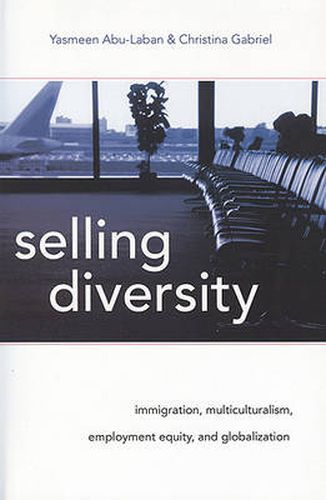Readings Newsletter
Become a Readings Member to make your shopping experience even easier.
Sign in or sign up for free!
You’re not far away from qualifying for FREE standard shipping within Australia
You’ve qualified for FREE standard shipping within Australia
The cart is loading…






Since the 1990s, Canadian policy prescriptions for immigration, multiculturalism, and employment equity have equated globalization with global markets. This interpretation has transformed men and women of various ethnic backgrounds into trade-enhancing commodities who must justify their skills and talents in the language of business. This particular neo-liberal reading of globalization and public policy has resulted in a trend the authors call selling diversity.
Using gender, race/ethnicity, and class lenses to frame their analysis, the authors review Canadian immigration, multiculturalism, and employment equity policies, including their different historical origins, to illustrate how a preference for selling diversity has emerged in the last decade. In the process they suggest that a commitment to enhance justice in a diverse society and world has been muted. Yet, neo-liberalism is not the only or inevitable option in this era of globalization, and Canadians are engaging in transnational struggles for rights and equality and thereby increasing the interconnectedness between peoples across the globe. Consequently, the emphasis on selling diversity might be challenged.
$9.00 standard shipping within Australia
FREE standard shipping within Australia for orders over $100.00
Express & International shipping calculated at checkout
Since the 1990s, Canadian policy prescriptions for immigration, multiculturalism, and employment equity have equated globalization with global markets. This interpretation has transformed men and women of various ethnic backgrounds into trade-enhancing commodities who must justify their skills and talents in the language of business. This particular neo-liberal reading of globalization and public policy has resulted in a trend the authors call selling diversity.
Using gender, race/ethnicity, and class lenses to frame their analysis, the authors review Canadian immigration, multiculturalism, and employment equity policies, including their different historical origins, to illustrate how a preference for selling diversity has emerged in the last decade. In the process they suggest that a commitment to enhance justice in a diverse society and world has been muted. Yet, neo-liberalism is not the only or inevitable option in this era of globalization, and Canadians are engaging in transnational struggles for rights and equality and thereby increasing the interconnectedness between peoples across the globe. Consequently, the emphasis on selling diversity might be challenged.